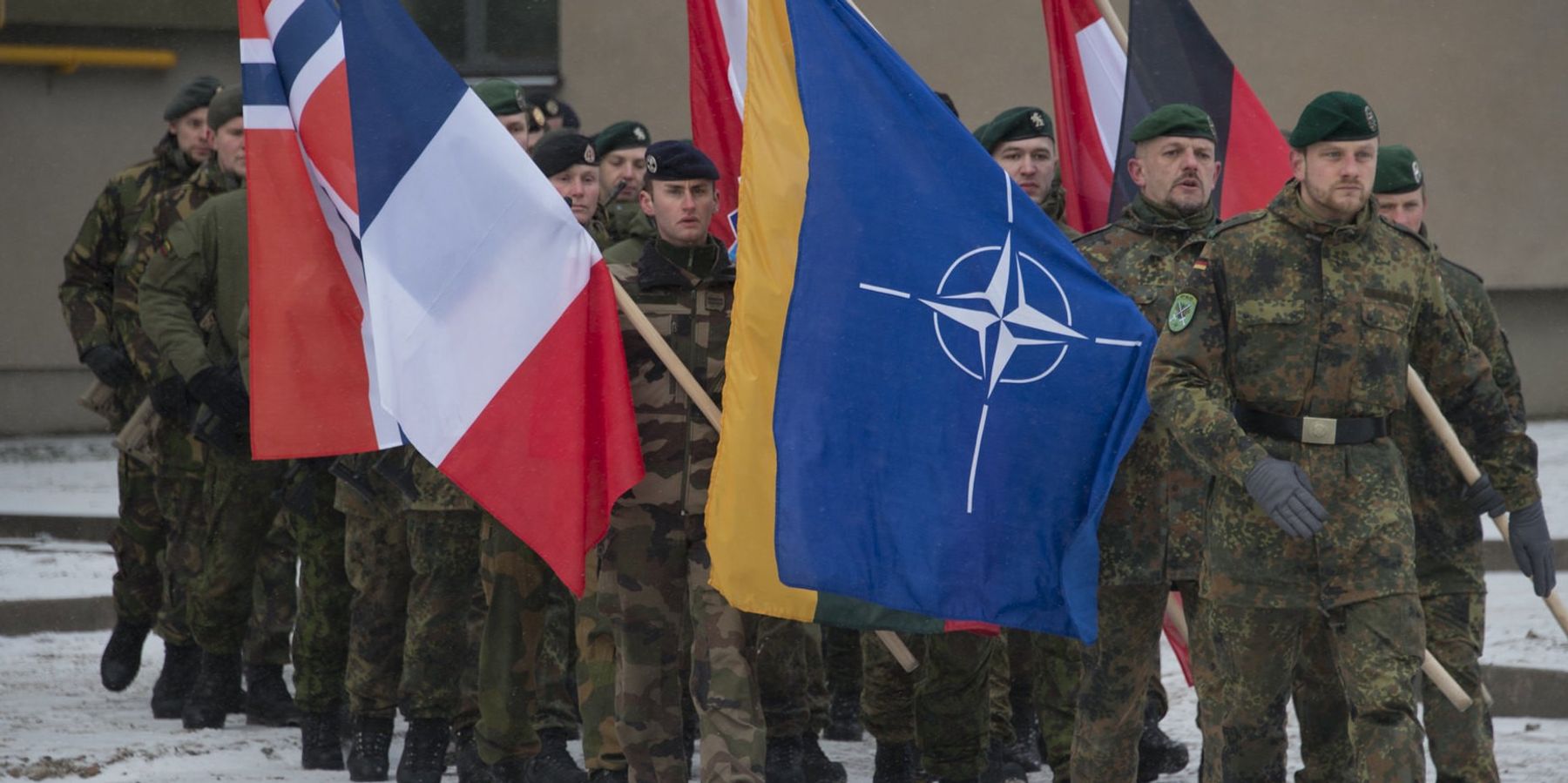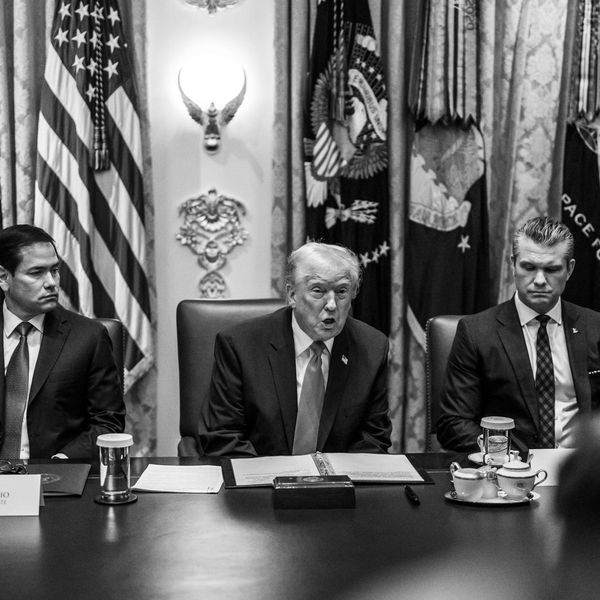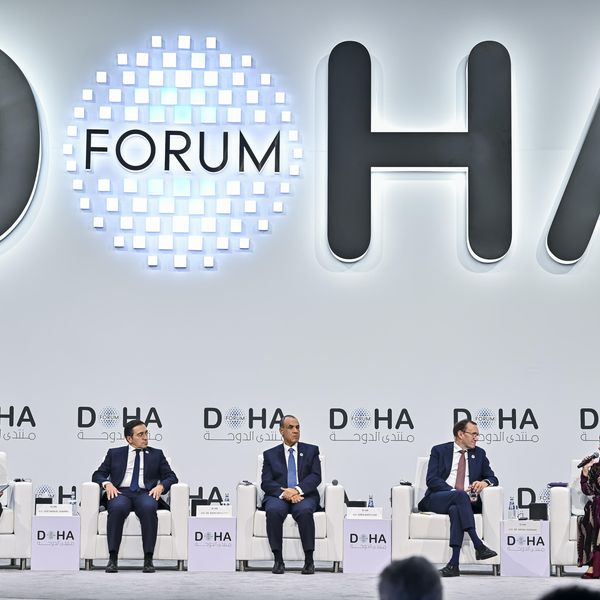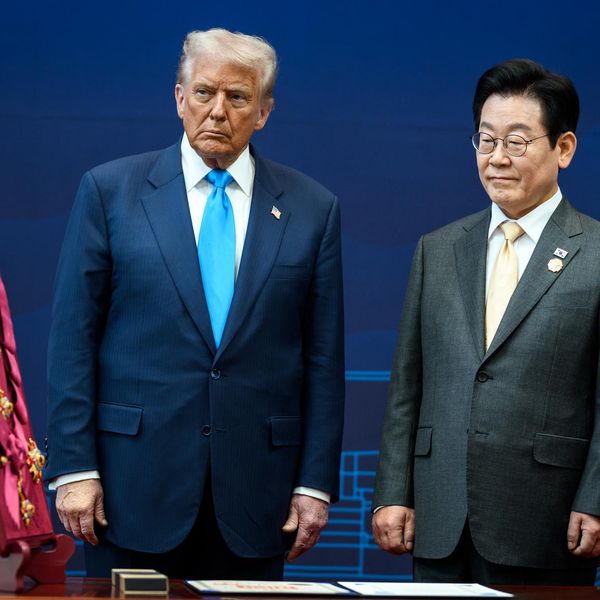The U.S., Ukraine, and Europe are inching closer to a security guarantees package to be presented to Russia as part of a settlement to end the Ukraine war. According to a Financial Times report today, the U.S. is already pledging “intelligence assets and battlefield oversight” to any Ukrainian-European plan for a post-war peacekeeping force.
The plan, detailed in the FT report, envisions a three-tiered security solution involving several external security guarantees operating in tandem with a Ukrainian domestic deterrent. The eastern/southeastern line of contact would be turned into a demilitarized zone to be patrolled by troops from a third country decided on by Russia and Ukraine. Most of central and western Ukraine, as well as parts of the east under Ukrainian control, would be defended by a NATO-trained and supplied Ukrainian military.
Finally, according to European and Ukrainian officials who spoke with FT, four to five European brigades, indirectly supported by U.S. intelligence, ISR, and Command and Control capabilities, would be deployed “deeper” into Ukraine, presumably in the far West.
European leaders have long sought to engineer a scheme for the deployment of European troops on Ukrainian soil as part of the “coalition of the willing” initiative spearheaded by French President Emmanuel Macron and U.K. Prime Minister Keir Starmer. Macron and Starmer have vigorously advanced this idea while simultaneously insisting that any such forward deployment is nonviable without an American backstop, taken to mean a U.S. commitment not just to support these brigades, but, if necessary, to defend Ukraine from future Russian attack.
European leaders are closer than ever to securing the former, but there is no evidence that the White House has budged on its underlying stance — incidentally also shared by the previous U.S. administration — that it will not put itself in the position, either now or in the future, of having to fight Russia over Ukraine. And so there is a sense in which the apparent U.S.-EU consensus on security guarantees is a hollow one; an exercise in talking past one another, as has often been the case in President Trump’s discussions with European leaders over the Ukraine issue.
If, as it appears, the U.S. position on extending a concrete military commitment to Ukraine remains unchanged, then the core rationale behind European leaders’ push for a forward deployment force in the first place remains unmet. Still, even in its current form, this scheme may offer a measure of reassurance to Kyiv — the West is, even if superficially, committing itself to Ukraine’s security. It would also pose a soft deterrent against Russia, as Moscow would have to weigh the risk that the West will not fold if it decides to attack Ukraine in the future. Forcing Russia to roll the dice on potentially getting itself into a wider war with NATO is, according to this line of thinking, a way of raising the Kremlin’s threshold for potentially deciding to reheat the war in the future.
One need not look very far to see what the Europeans and Ukraine are hoping to get out of a tripartite scheme along these lines. What is less clear is why Russia would agree to any of this.
Russia has waged this war in part not just to foreclose the possibility of Ukraine entering NATO, but to ensure that NATO will never be in Ukraine. There are numerous deal sweeteners that can be offered on sanctions, reintegration of Russia into multilateral institutions, U.S.-Russia regional cooperation in the Arctic and Middle East, and strategic stability talks, but none on a scale sufficient to convince Russia to revise its stance on NATO troops in Ukraine.
Our capacity for incentivizing Russian concessions on security guarantees is further hamstrung by Ukraine’s apparent lack of flexibility on the other big negotiating cluster: the territorial question. Telling Russia that it must accept a Western tripwire in Ukraine while rejecting its territorial demands, though attractive from Ukraine’s perspective, is unlikely to return favorable results at the negotiating table. The West can try to reassure Russia by providing verifiable, enforceable guarantees that the European presence in Ukraine will not be expanded beyond what is initially agreed to and it will not move an inch beyond the sliver of Western Ukraine that it will be confined to, but it is unclear that such guarantees, even if presented in a credible way, will be enough for Russia.
As for the demilitarized zone along the line of contact, the challenge of identifying a peacekeeping country that both Russia and Ukraine will agree to is a prodigious one. Any non-Western or global south country capable of filling this role will likely be rejected by Ukraine on grounds of being too close to Russia, while any Western country will be rejected by Russia for reciprocal reasons. Turkey, though it maintains a quite decent relationship with Russia, is a NATO country. Those discussions would have to be grounded in ironclad guarantees that Turkish forces operating across the line of contact agree to forfeit Article 5 protections of any kind.
Russia may counteroffer by proposing additional Chinese or Brazilian contingents, which, if it is the only way to salvage a proposal along these lines, is something that the West should seriously consider.
If Russia remains unmoved in its rejection of preemptive European deployments, the West could counteroffer with reactive deployments. That is, it could leave the door open on moving European contingents into Ukraine in the event of future Russian aggression. That, too, would make for difficult negotiations, but it is easier to see how a proposal along these lines would be accepted if Moscow gets enough of what it wants in the other negotiation clusters.
The larger problem is that these discussions are unfolding in the absence of sustained multi-channel diplomacy with the other belligerent. Rather than drawing up packages to be presented to Russia, U.S. and Ukrainian negotiators should look into the possibility of setting up working groups with Russian officials where security, territorial, and other issues can be discussed in real time. Though Trump made significant progress in paving the way for constructive diplomacy in the Alaska summit, the issues at stake are far too numerous and technical to be resolved purely at the head of state level.
Vladimir Putin, in a recent phone call with Trump, agreed that the level of representation in ongoing Russia-Ukraine talks can be raised. Now is the time for the U.S. to go further in arranging a series of parallel formats for negotiations between top officials where offers and counteroffers can be made in a more fluid fashion than what’s possible purely through asynchronous, executive-level talks.
- Why Putin is winning ›
- European 'peacekeepers' in Ukraine? A horrible idea. ›
- NATO ambassador: don't hate on the sausage before its made ›
















